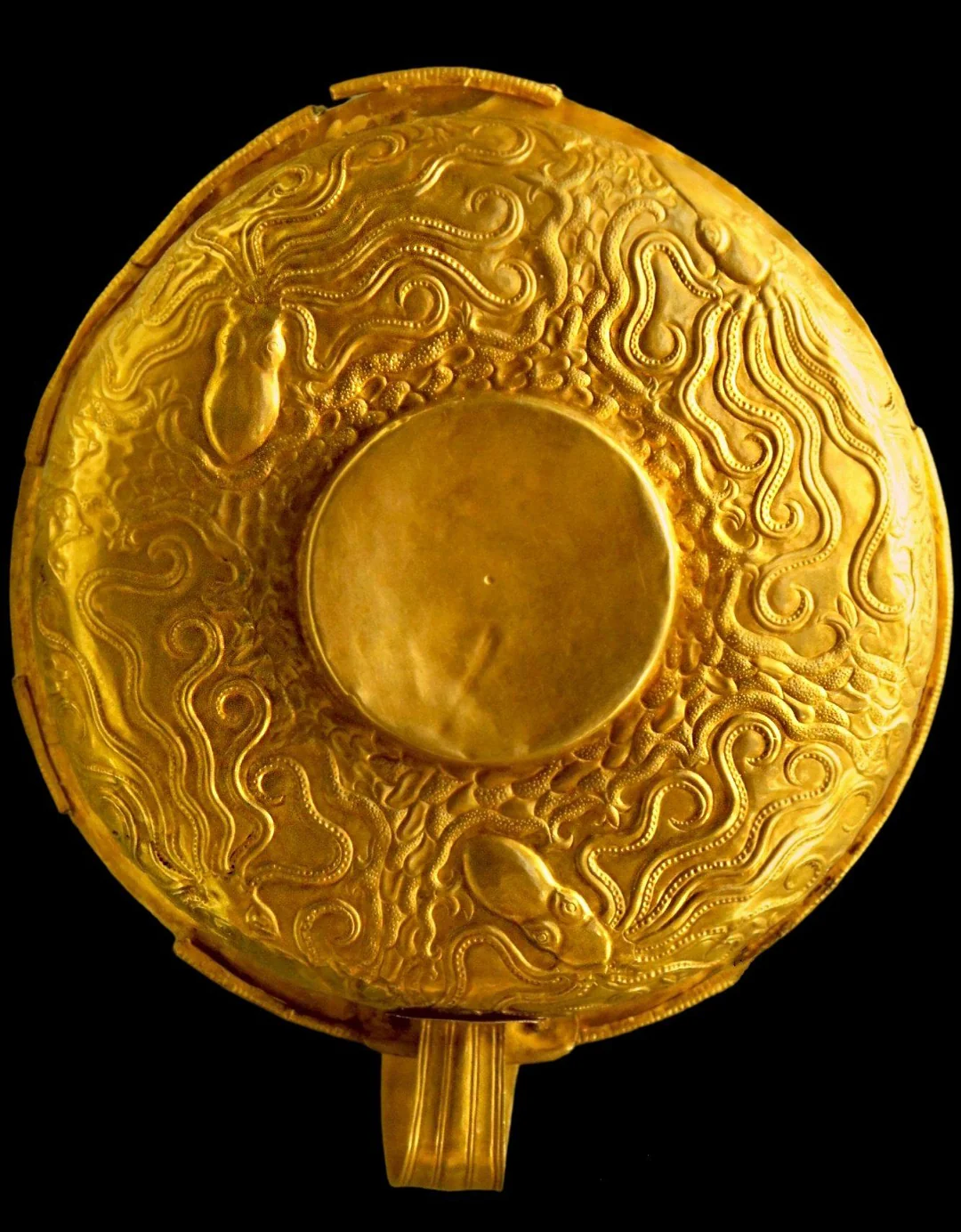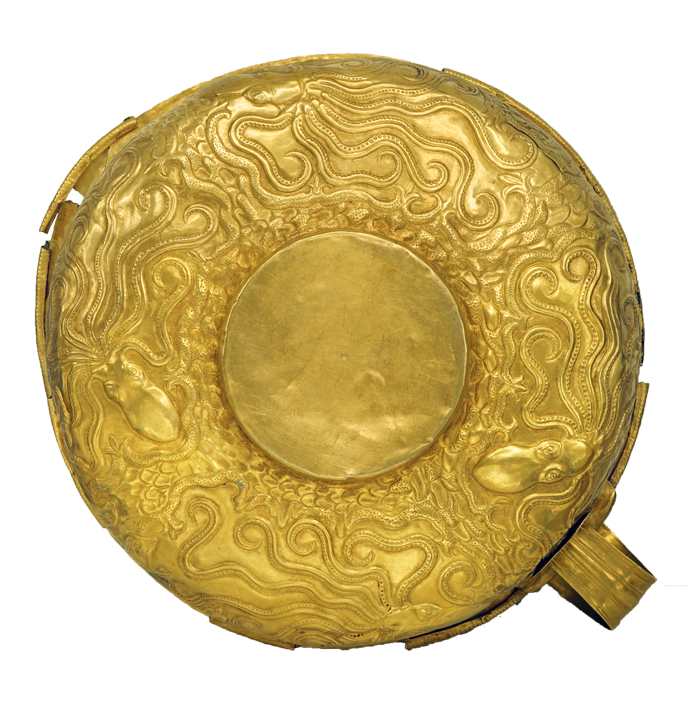Magnificent Golden Cup with Seafloor Scene from Dendra Tholos Tomb Discovered in 1926 Excavation

The year was 1926 when the Swedish excavators of the tholos tomb at Dendra in Argolis made a groundbreaking discovery that would captivate the archaeological world. Unearthing a rich royal burial from the early Mycenaean world, they revealed a treasure trove of grave goods, among which stood out a magnificent golden cup. This cup, adorned with a vivid seafloor scene hammered onto its inner surface, offers a glimpse into the artistic and cultural sophistication of ancient Greece.
The tholos tomb at Dendra, situated in the fertile landscape of Argolis, served as the final resting place for a prominent individual or ruling family during the Mycenaean period. Tholos tombs, characterized by their distinctive beehive-shaped domes, were reserved for the elite members of Mycenaean society, reflecting the hierarchical structure and social stratification of the time.
The excavation of the Dendra tholos tomb yielded a wealth of artifacts, including pottery, jewelry, weapons, and precious metals. However, it was the discovery of the golden cup that truly captured the imagination of archaeologists and historians alike. Crafted from gleaming gold and meticulously decorated with intricate scenes, this cup exemplifies the skill and artistry of Mycenaean craftsmen.

What sets the golden cup from Dendra apart is its unique decoration – a vivid seafloor scene meticulously hammered onto its inner surface. The scene depicts a mesmerizing underwater world teeming with marine life, including fish, octopuses, and seaweed, rendered in astonishing detail. The craftsmanship required to create such a scene on a curved surface speaks to the mastery of Mycenaean metalworkers and their ability to manipulate precious metals with precision and finesse.
The seafloor scene depicted on the golden cup holds significant symbolic and cultural meaning within the context of ancient Greece. The sea, with its vastness and mystery, held a special place in Greek mythology and cosmology. It was associated with gods and goddesses such as Poseidon, the god of the sea, and Amphitrite, the queen of the sea. The depiction of marine life on the cup may symbolize themes of abundance, fertility, and the cycle of life and death – concepts deeply ingrained in Mycenaean religious and cultural beliefs.
Furthermore, the seafloor scene on the golden cup offers tantalizing clues about the role of the sea in Mycenaean society. The Mycenaeans were skilled sailors and traders who established maritime networks throughout the Aegean and beyond. The depiction of marine life on the cup may reflect the Mycenaeans’ close relationship with the sea and their reliance on it for sustenance, trade, and cultural exchange.

The discovery of the golden cup from Dendra sheds light on the opulence and sophistication of Mycenaean material culture. Gold, with its intrinsic value and rarity, was reserved for the elite members of society and used to create objects of prestige and power. The intricate decoration of the cup demonstrates the importance of aesthetics and symbolism in Mycenaean art, as well as the skilled craftsmanship that went into its creation.
In conclusion, the golden cup from the Dendra tholos tomb stands as a testament to the wealth, artistic achievement, and cultural significance of the early Mycenaean world. Its depiction of a seafloor scene offers valuable insights into Mycenaean beliefs, practices, and connections to the natural world. As a tangible link to the past, this magnificent artifact continues to inspire awe and admiration, inviting us to explore the mysteries of ancient Greece and the enduring legacy of its civilization.